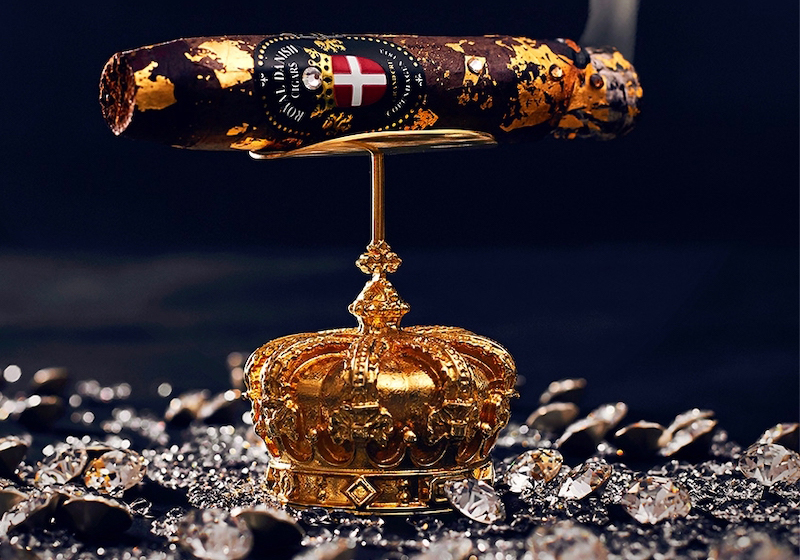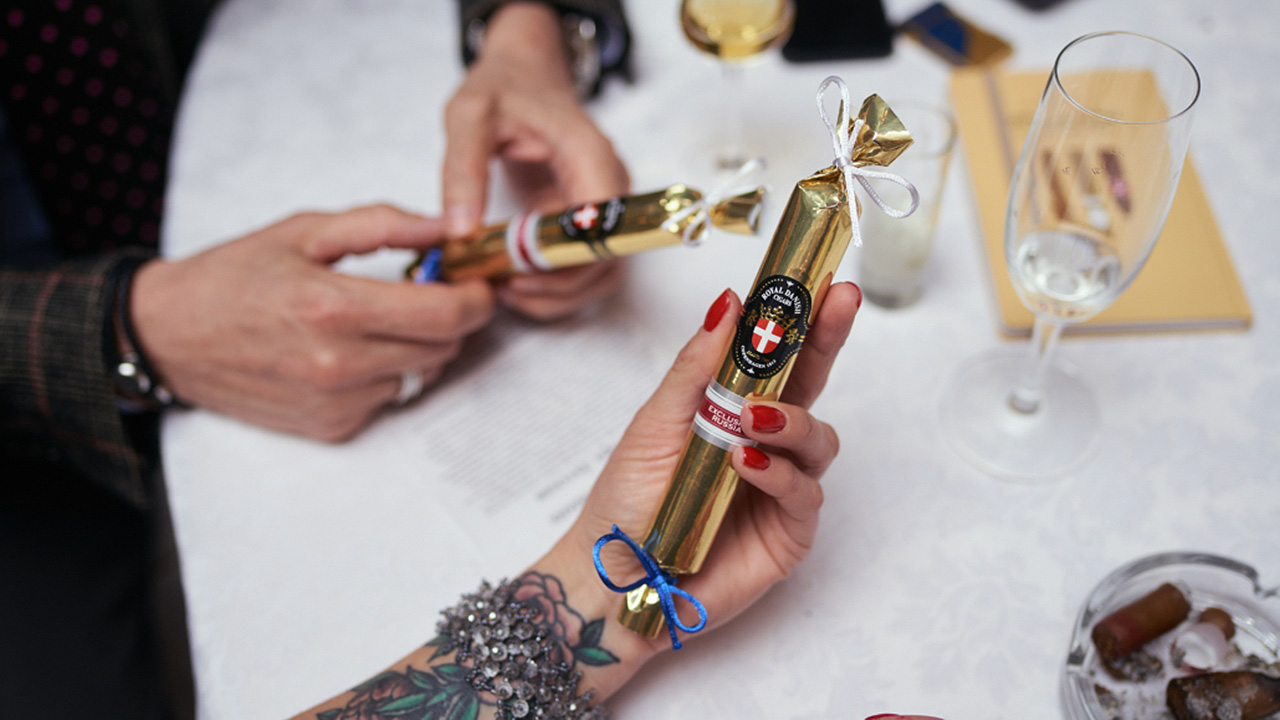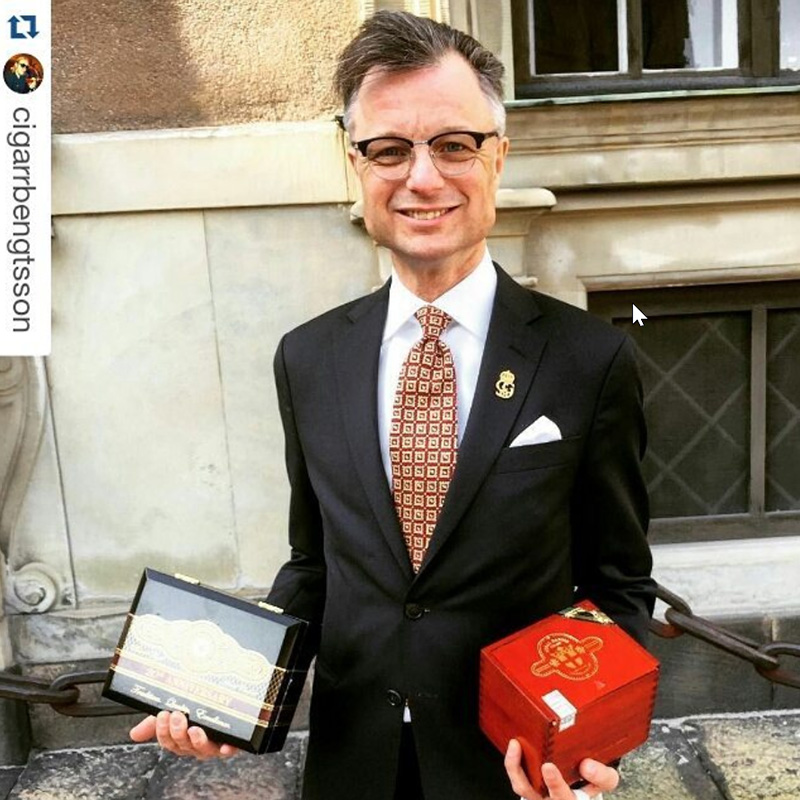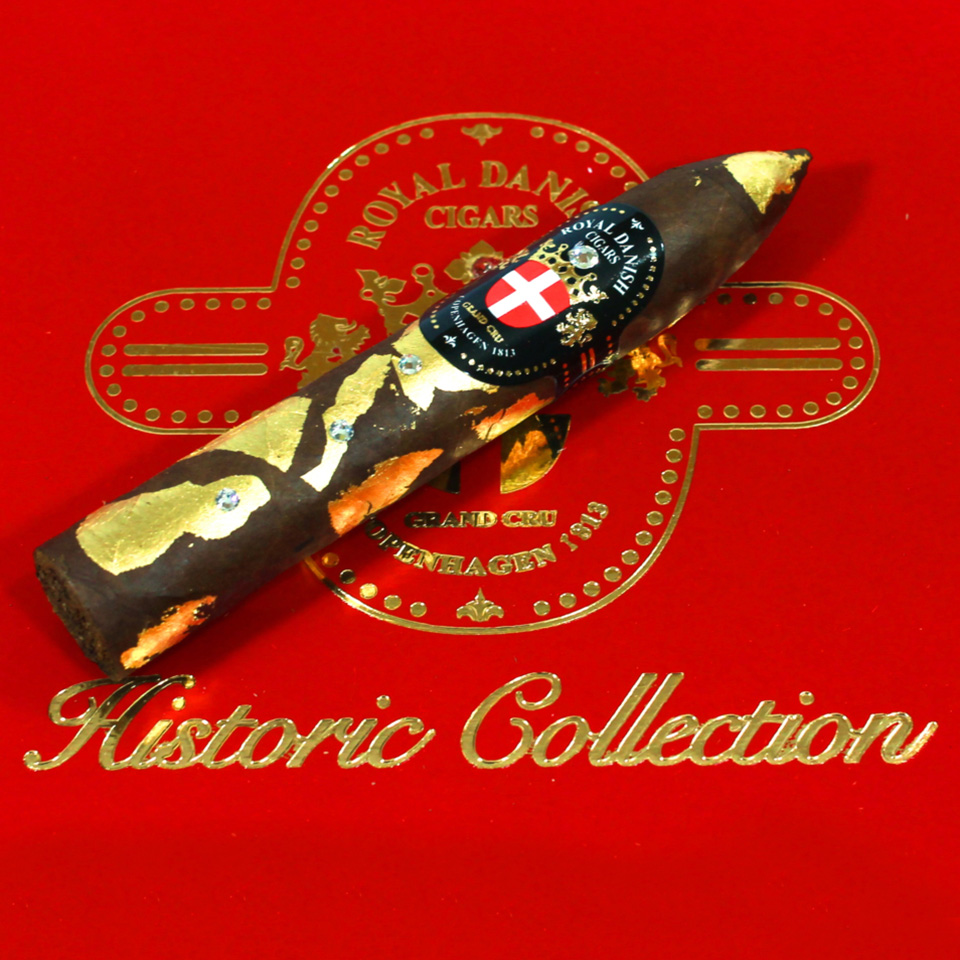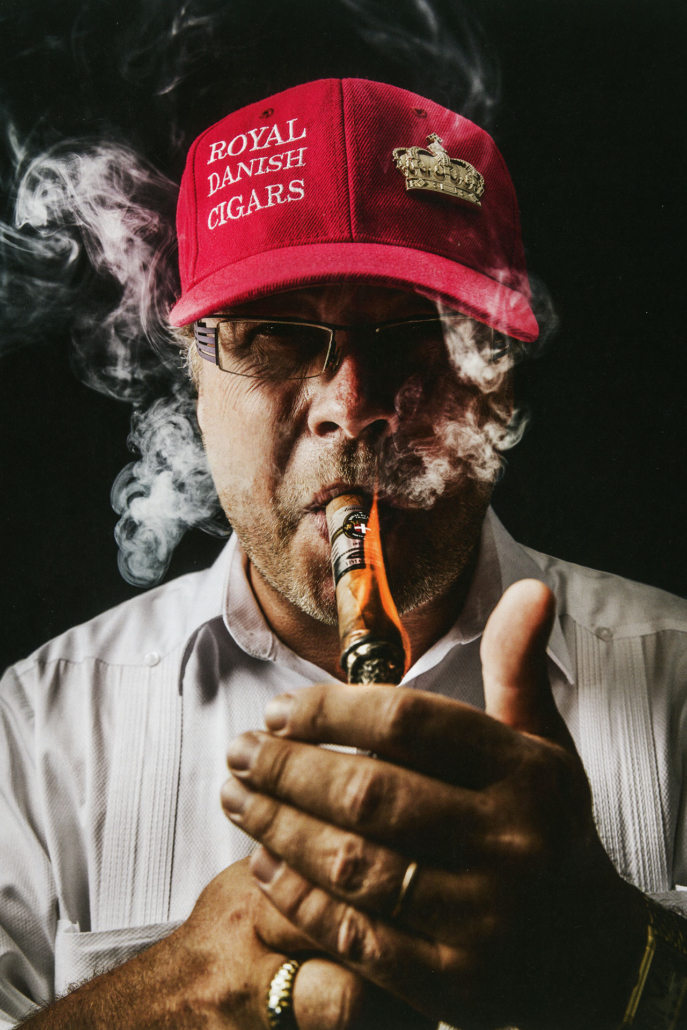Danish Cigar History
200+ years of tobacco tradition in Denmark
King Frederick VI of Denmark granted permission to the first cigar roller in Copenhagen in 1813
The Danes have a long history of smoking and growing tobacco. It dates back more than 200 years and peaked in 1964 with 1.1 billion consumed cigar products being the world’s largest consumption per inhabitant. The tobacco industry first saw light in 1665 when the Danish King Frederik III granted the permission to a Mr. Marcus Selche who had learn the art of spinning tobacco abroad and as the smoking of tobacco became very popular there was a 100 years later more than 30 tobacco spinners in the capital of Copenhagen. In the 16th century, tobacco was cultivated in Denmark. One of the reason for this was it was costly to import tobacco from overseas and this made the green leaves very precious. Tobacco was purchased in large quantities and had to be matured for two to three years at a cool temperature before being processed into tobacco. For instance, on Færch Tobacco Factory, the tobacco stock had an estimated value of more than 82.980 Danish kroner (EURO 11,000) in 1898 which exceeded the total value of all factory buildings.
While the selection of imported tobacco from South America was very limited, the Danes was involved in the tobacco business abroad through their almost 250 years occupation of the Danish West Indies. In 1671, The Royal Danish Chartered West India and Guinea Company were founded and their main activities were tobacco and sugar trade. In 1916, The Treaty of the Danish West Indies, officially the Convention between the United States and Denmark for cession of the Danish West Indies, transferred the sovereignty of the Danish West Indies to the United States for a sum of US$25,000,000 in gold paid to Denmark. This meant that the islands now were renamed the United States Virgin Islands. The Danes departed and the country’s tobacco production was again concentrated on the their home soil. In reality, this meant that most of the tobacco that was consumed in Denmark came from Danish plantations or from Europe, mainly Germany and in 1778, the Danish government even imposed that all tobacco spinners had to operate tobacco plantations because of an increasing demand.
The result was that the capital of Copenhagen was surrounded by tobacco plantations. However, it was not until the 18th century that the cigar made its grand debut in Denmark. It had become hugely popular to smoke cigars during the Napoleon Wars and in 1813, the Danish king Frederik VI granted permission to make cigars to tobacco spinner, Jens Sørensen. As the trend spread to Denmark, many small cigar making businesses saw the light where one man and his family sat at home rolling cigars.
King Christian IX of Denmark was an enthusiastic cigar aficionado and on request from the Royal Danish Court, a cigar was named after his majesty. The King was sending boxes of cigars with his private label to family members and dignities including his grandson, Zar Nicholas II of Russia. Royal Danish Cigars were therefore smoked around the world after Christian IX was crowned in 1863. In 2018 Royal Danish Cigars made a very special limited edition EXCLUSIVE RUSSIA for LA GRAN FUMADA in Sankt Petersburg to celebrate Maria Feodorovna (26th of Nov. 1847 – 13th of Oct. 1928), known before her marriage as Princess Dagmar of Denmark and after her marriage Empress of Russia as spose of Emperor Alexander III (reigned 1881-1894). She lived in the famous Winter Palace in Skt. Petersburg until she was buried under Roskilde Cathedral, Denmark from 1928-2006 where after her remains were sent to Peter and Paul Cathedral in Skt. Petersburg to lay next to her spouse. Princess Dagmar was the second daughter of King Christian IX of Denmark.
Today, most of Europe’s reigning and ex-reigning royal families are direct descendants of Christian IX, and most current European monarchs are descended from him, including Queen Margrethe II of Denmark, Queen Elizabeth II of the United Kingdom, King Philippe of Belgium, King Harald V of Norway, King Felipe VI of Spain and Grand Duke Henri of Luxembourg. The consort Prince Philip, Duke of Edinburgh, and former consort Queen Sofía of Spain are also agnatic descendants of Christian IX, as is Constantine II, the former and last King of the Hellenes, and his consort the former Queen Anne-Marie. King Michael I of Romania and his wife Queen Anne of Romania were also descendants of Christian IX.
The life of the Cigar Maker
In the 18th century when the first cigar makers started to appear, they were to a large extent scorned because cigars were thought to be a new and unknown product. That was, however, soon to change as the cigar making became an independent and recognized skill that required an apprenticeship. In the tobacco factories, cigar-making took place at long tables where each cigar maker had his own place and his own tools: roller block, detour machine, glue pot, roller blade, wrap frame and wrap paper as well as a bottle of water to moisten the pieces of burlap which was covering the tobacco leaves. When the cigar maker had finished the day’s production, he would put all his cigars in a box and make a list of name and numbers and hand it over to the master for weighing and control. Finally, a cigar was smoked from the box to test its quality. The same quality control system used today by Royal Danish Cigars®
The working hours were long but the cigar makers had very free conditions and could leave the factory any time they pleased, visiting pubs or going on picnics. Cigar makers were respected and considered belonging on top of the hierarchy in the tobacco factory since they had spent time aboard learning the trade. Many were intellectual and while sitting at long tables rolling cigars, they debated politics and philosophical topics and also the reading of fiction took place. In the light of all the political discussions that took place in the cigar making rooms, it only seemed natural that the cigar makers established their own trade union. The first one was called “Enigheden” and was established in 1871 but it was only for male cigar makers, making it a problem since women and unskilled laborers could be persuaded to take on the cigar maker’s work when a strike hit. In 1887 “Tobaksarbejderforbundet” was established and that included both male and female cigar workers.
Competition and privilege of cigar rolling
The tobacco factories’ skilled workers were divided into cigar makers, cigar sorters and tobacco spinners and they all had a fierce competition going on about who was the most prestigious. The cigar sorters were for instance considered simple “package fellows” by the cigar makers. In return, they saw themselves as pure artists. The cigar sorters had no doubt that they ranged in top of the hierarchy since they selected and evaluated the cigars when they had been rolled by the cigar makers. Adding to that, they also got a better pay, were better dressed and overall considered themselves more stylish that the others in the factory. In reality, both cigar makers and sorters got piece rates and they both had to undergo an apprenticeship for four years. It was very attractive to get an apprenticeship on a tobacco factory as it was both associated with prestige, good pay and the possibility to move abroad to be further educated. However, in the 1960s the tobacco industry’s apprenticeship ended as the introduction of machines superseded the need for skilled cigar makers, sorters and tobacco spinners.
The rise and fall of the tobacco industry
In 1872, it was possible to count 102 tobacco companies in Denmark that all together employed around 3800 people. The tobacco industry now constituted a substantial part of the employment in Denmark. But it was not until 1921 that the number of tobacco companies peaked, counting none less than 1518. However, more than 1200 were sole proprietorship where the owner either worked alone or got help from family members. On 1495 of the factories, cigars were produced and the total of employees in the tobacco industry amounted to 10,000. In 1939, just before World War II broke out, the tobacco companies were reduced to 421 whereof 262 were sole proprietorship. In return, there were six large companies employing more than 500 people each here among C.W. Obel who over time had become the largest Danish tobacco producer. The company later became part of The Scandinavian Tobacco Company (which today is known as STG ) which consists of six of the eight tobacco factories left in Denmark.
During World War II, it became virtually impossible to import raw tobacco from overseas so the tobacco industry became largely dependent on Danish cultivation of tobacco. In the years from 1942-45, the share of Danish tobacco grew from 5 % to 44 % in 1945. So World War II also saw a return in the cultivation of Danish tobacco as it was used to substitute the lack of foreign tobacco. During the German occupation the cultivation grew substantially and at the liberation in 1945, there were more than 12.000 tobacco growers, covering an area of 17.566.000 m2 and producing 3.037 tons of tobacco. However, the war was times of hardship and the lack of imported tobacco during the war years meant that a lot of small companies had to close down and larger factories only offered workers eight hours of work a week. In this period of hardship, many cigar-makers had to claim whatever unemployment benefits they could get.
The industrialization of cigar-making
At the end of the 18th century, the cigar industry had experimented with making the production of cigars more efficient. A number of different machines were tested throughout the years, but it was not until the 1920’s the German Perfecto Machine was introduced to produce cigars and cigarillos. The consequences for the cigar makers were that their work was separated into different functions and some of these functions could now be carried out by unskilled laborers.
After World War II, cigar machines could make up to 5000 cigars a day as opposed to the cigar maker’s handmade production of 250 a day. As the mechanization of cigar making got a foothold on the production and an increasing competition from foreign competitors came about, many smaller cigar-making businesses had to close down. Only the very organized and skilled cigar makers succeed in creating large business by investing in machines and making production efficient and as some companies grew bigger, the master was moved away from the actual production and took a more administrative role, dealing with accounts, marketing and procurement. This fostered a larger divide between employees and employer and more masters had to be taken on to keep up with an expanding production. Since the peak in 1964 with 1.1 billion consumed cigars only in Denmark, cigar smoking habits have changed and the demand decreased, forcing many of the small businesses to close and the actual apprenticeships in the tobacco factories were abolished around 1960. The big players who succeeded in expanding their production were C.W. Obel, Færch and Augustinus. In 1961 they merged into The Scandinavian Tobacco Company. The merge was a necessary consequence seen in the light of a fore coming European collaboration, which would abolish the VAT on tobacco, making Danish tobacco goods very exposed to foreign competition.
In 1864, the year after King Christian IX was crowned, and for 140 years, W.Ø. Larsen operated the oldest most luxurious cigar and later pipe tobacco store in Copenhagen. It was located on the shady side of the pedestrian walk know as “Strøget” in order to protect the fine cigars against sun light. Right from the beginning the store almost only sold cigars which were the preferred way to enjoy tobacco at that time both in Denmark and abroad. The clientele grew fast and became extensive in no time. One solid group of customers was the gentry and they took up residence in the capital mainly in the winter months either in one of the city’s fine hotels or in their own mansions. The large-scale costumers also had their own preferred cigar brand which had to be ready in boxes. A real gentleman smoked perhaps ten cigars a day back then so a so-called half box with 50 cigars only lasted for less than a week.
Royal Danish to Swedish King, W.Ø. Larsen achieves the predicate “By Appointment to The Royal Court” by King Christian IX. The Swedish Court also smoked W.Ø. Larsen’s cigars and in 1926, the shop was also appointed to supply the Swedish Royal Court with cigars. Where royal connections in many places have been determined by history, an active customer relationship has always existed between W.Ø. Larsen and the Royal Family. In 2016 our Swedish distributor made an express delivery of Royal Danish Cigars to the Royal Palace in Stockholm.
Fast delivery to the royal castle and to our king Carl den 16:e Gustav and his 70th birthday dinner. Royal Danish Cigars and Perdomo Cigars will be served after the dinner.
Enjoy!
The QUEENS #1 with 24KT Gold and Swarovski is a beautiful mild to medium bodied 52×5” Torpedo hand rolled from the rarest tobaccos available. The production is limited to only 10 cigars per day due to the extensive and time consuming art work done by Jan Vistisen personally. There are not two identical cigars. The price is EUR 150 per cigar and it only comes in boxes of 10 and each of them with different spectacular colors of Swarovski crystals. We also offer the uniquely designed 24kt gold plated sterling silver royal crown cigar-holder as seen on the top of this website for EUR 950, probably the most exclusive cigar stand in the world today! Order your box and cigar holder together and we engrave a personalized message on top of the cigar holder for free.
#SmokeLikeaKing – guaranteed worldwide shipping by currier in 72 hours with tracking included.
Since 2011 Jan Vistisen has been the owner of the Royal Danish Cigars reg. trademark under VA 2011 02385 / VR 2011 02580 in the Kingdom of Denmark. In 2019 the Royal Palace, without due process, decided no longer to support tobacco smoking and stopped shops in Denmark from selling cigars under his legally registered trademark, despite the Queen herself is a heavy cigarette smoker!
The best sellers of RDC were moved over to his new EU reg. trademark House of Nicaragua. Today only the 24KT Gold and Swarovski cigars, still decorated by Jan Vistisen personally, are sold outside Denmark to protect his trademark rights and keep this beautiful tobacco history alive. Like they say; “one picture tells more than a thousand words” click on this link to see 1000+ pictures about Royal Danish Cigars from around the world.

All rights reserved © Royal Danish Cigars
